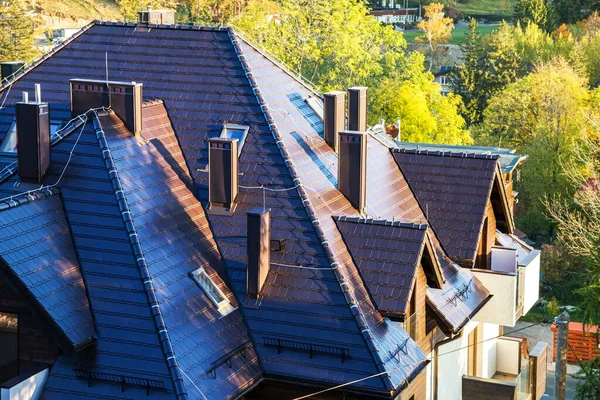As climate change continues to intensify, extreme weather events like heat waves are becoming more frequent and severe. These climatic shifts not only pose a threat to our environment but also impact our daily lives particularly in terms of energy consumption.
One crucial aspect that plays a significant role in mitigating the effects of heat waves is the type of roofing we choose for our homes. We explore the relationship between heat waves and savings, highlighting the importance of energy-saving roofing in withstanding the elements. For energy saving roofing in portland contact CRS Roofing a trusted choice for sustainable solutions.
Understanding the Impact of Heat Waves
Heat waves, characterized by prolonged periods of excessively high temperatures, can have detrimental effects on various aspects of our lives not only do they lead to increased energy consumption as people strive to cool their homes but they also contribute to the escalating demand for electricity this surge in energy usage not only strains power grids but also results in higher utility bills for consumers.
Traditional roofing materials, such as asphalt shingles, absorb and retain heat, exacerbating the indoor temperatures during heat waves. This phenomenon, known as the urban heat island effect contributes to the overall rise in ambient temperatures in urban areas. As a consequence, individuals are forced to rely more heavily on air conditioning systems, further escalating energy usage.
The Role of Energy-Saving Roofing
Energy-saving roofing materials are designed to counteract the adverse effects of heat waves by reflecting more sunlight and absorbing less heat. One such innovative solution is cool roofing which typically consists of reflective materials that efficiently reflect sunlight and emit absorbed solar radiation this reflective property significantly reduces the amount of heat transferred into the building, keeping indoor spaces cooler and reducing the need for constant air conditioning.
Cool roofing materials come in various forms, including reflective coatings, tiles, and shingles. By choosing these materials, homeowners can make a positive impact on both the environment and their finances. The energy savings resulting from reduced cooling needs contribute not only to lower utility bills but also to a decreased demand for electricity during peak times, ultimately alleviating the strain on power grids.
Financial Benefits of Energy-Saving Roofing
Investing in energy-saving roofing may require an initial upfront cost, but the long-term financial benefits far outweigh the initial investment. Homeowners stand to gain significant savings on their energy bills over the years, as the reduced need for air conditioning translates into lower electricity consumption.
Moreover, some governments and municipalities offer incentives and rebates for installing energy-efficient roofing materials. These financial perks can further offset the initial costs, making the transition to energy-saving roofing an even more attractive option for homeowners.
Environmental Impact
Beyond the personal financial benefits, the environmental impact of energy-saving roofing cannot be understated. By reducing energy consumption and lessening the demand for electricity during peak times, homeowners contribute to a decreased carbon footprint. This, in turn, helps combat climate change by mitigating the environmental consequences of excessive energy usage.
Conclusion
As heat waves become more prevalent, it is imperative that we take proactive measures to adapt to changing climatic conditions. Energy-saving roofing presents a practical and sustainable solution to mitigate the impact of extreme temperatures on our homes and the environment.
By investing in reflective and heat-resistant materials, homeowners not only save on energy costs but also contribute to a more sustainable and resilient future. As we navigate the challenges posed by climate change, choosing energy-efficient roofing is a small yet significant step towards creating a more environmentally conscious and economically sound living space.



